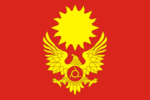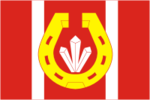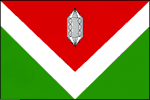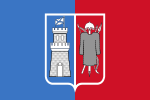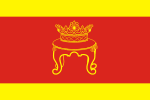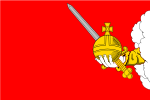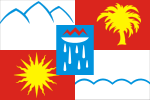This article is missing information about details of each flag.(July 2022) |
This is a list of city flags in Russia. Most flags were banner of arms. As a result, this list also discusses about the coat of arms. Please note that this list includes flags from Crimea and Sevastopol which are de facto Russian city flags but internationally recognized as city flags in Ukraine.
Contents
- Republic of Adygea
- Cities and towns
- Rural localities
- Altai
- Bashkortostan
- Buryatia
- Chechnya
- Chuvashia
- Dagestan
- Ingushetia
- Kabardino-Balkaria
- Kalmykia
- Karachay-Cherkessia
- Karelia
- Khakassia
- Komi
- Mari El
- Mordovia
- North Ossetia–Alania
- Sakha
- Tatarstan
- Tuva
- Udmurtia
- Amur Oblast
- Arkhangelsk Oblast
- Astrakhan Oblast
- Belgorod Oblast
- Bryansk Oblast
- Chelyabinsk Oblast
- Irkutsk Oblast
- Ivanovo Oblast
- Jewish Autonomous Oblast
- Kaliningrad Oblast
- Historical
- Kaluga Oblast
- Kemerovo Oblast
- Kirov Oblast
- Kostroma Oblast
- Kurgan Oblast
- Kursk Oblast
- Leningrad Oblast
- Lipetsk Oblast
- Magadan Oblast
- Moscow
- Moscow Oblast
- Murmansk Oblast
- Nizhny Novgorod Oblast
- Novgorod Oblast
- Novosibirsk Oblast
- Omsk Oblast
- Historical 2
- Orenburg Oblast
- Oryol Oblast
- Penza Oblast
- Pskov Oblast
- Rostov Oblast
- Ryazan Oblast
- Saint Petersburg
- Sakhalin Oblast
- Samara Oblast
- Saratov Oblast
- Smolensk Oblast
- Sverdlovsk Oblast
- Tambov Oblast
- Tomsk Oblast
- Tula Oblast
- Tver Oblast
- Tyumen Oblast
- Ulyanovsk Oblast
- Vladimir Oblast
- Volgograd Oblast
- Vologda Oblast
- Voronezh Oblast
- Yaroslavl Oblast
- Altai Krai
- Kamchatka Krai
- Khabarovsk Krai
- Krasnodar Krai
- Krasnoyarsk Krai
- Perm Krai
- Primorsky Krai
- Stavropol Krai
- Zabaykalsky Krai
- Chukotka Autonomous Okrug
- Khanty-Mansi Autonomous Okrug
- Nenets Autonomous Okrug
- Yamalo-Nenets Autonomous Okrug
- References






































